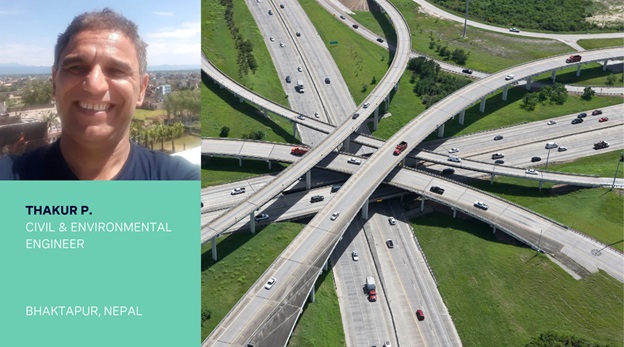In South Asia, what are the most immediate infrastructural challenges that must be overcome to ensure public & environmental safety? What must governments and other stakeholders do to overcome these challenges?
Thakur P.
Civil & Environmental Engineer (Formerly worked at UNDP and the Department of Water Supply & Sanitation Management at the Government of Nepal)
Bhaktapur, Nepal
“The short-answer here is that urbanization, which requires improving infrastructure and social connectivity between several sectors of development, will be the fix. Yet the major dilemma – which is not specific to Southeast Asia – is that while governments & civil society are in favor of environmental safeguards, the private sector can’t solely invest in environment protection measures without incorporating the cost of its services on customers and society.
With this in mind, I would like to highlight the main aspects of infrastructure development and safeguards in the following points:
Green infrastructure is practiced to some extent but the methods for its quality measurement and the quantification of its benefits are still at an infant stage. This is a policy challenge ahead of all stakeholders and requires a government fix. Design measures are very insufficient and, with a few exceptions, lack standardization. Today, hybrid-type green infrastructure may serve as a solution bringing benefits to society, businesses and the environment as well.
Tools for the governance of environmental and social safeguards are very limited with few exceptions for donor funded / induced projects. The current trend of ESG may be a better tool but it is not yet developed and embedded in large-scale at the local government level. Governments are functioning as investors, regulators, users and managers, yet if we want to make the system more inclusive and equitable, this is not justifiable in view of governance as a development mechanism.
Ecosystem services appear to be trending but still, they exist largely in theory and not practice. Progress in one particular region and/or sector – such as tourism – doesn’t represent progress at the society and environment levels. As ecosystems degrade day by day, the challenge is making the infrastructure and services sustainable by embedding their value-added for ecosystem services. The hotels and tourism sectors are economically attractive but in the absence of regulation, degradation will continue with severity.
Finally, stakeholder engagement is a complex process that has not been practiced as needed. This process can eventually make the political will stronger in favor of the society at large and environment. Yet expert engagement doesn’t happen when vested political and business interests come into play. Hence, the real need is for a robust, standardized and regulated process of stakeholder engagement with little influence from political and financial interest groups. There should be a mandatory system of regulated prioritization and financial decisions for infrastructure development and maintenance. The cost of the investment for environmental protection should be borne by all stakeholders including the private sector.”

